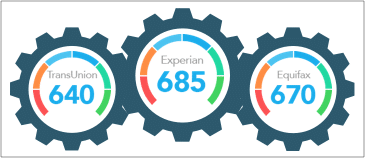A credit card convenience fee is a charge many merchants levy for the privilege of using a credit card rather than another, more usual form of payment. In other words, if a business usually accepts checks or ACH, they may offer credit card payments as a convenience and charge an extra fee for that convenience
The guide will cover why merchants charge convenience fees, the legality of these charges and how you can avoid paying them.
What Are Convenience Fees?
A convenience fee is a charge for using your credit card as an alternative form of payment or a non-standard channel for payment. Typically, this means that the organization receiving payments usually accepts those payments through other means (like a bank draft), but will accept a credit card payment only with the additional fee.
Two common instances where a convenience fee may be imposed are when you pay tuition or taxes. In these cases, checks and automatic withdrawals are the most common form of payment accepted. If you choose to pay by credit card, it may be considered an alternative payment method and, as such, you may be assessed a convenience fee.
Convenience fees are also sometimes imposed when a non-standard platform is used to pay for a product or service. For example, movie theaters sell the majority of their tickets at the box office. However, many movie theaters offer customers the alternative option of purchasing tickets over the phone, using a credit card.
In this case, the movie theater can charge a convenience fee, not for using your credit card, but for the privilege of being able to pay over the phone.
Why Do Merchants Charge Convenience Fees?
Accepting credit card payments costs businesses money. Payment processing companies impose a fee each time a business performs a credit card transaction. That fee is alongside any additional costs for credit card hardware and software to be able to process credit payments.
For major retailers, grocery stores and other businesses which routinely accept credit card payments, the processing fees are an accepted cost of doing business. They may even build the processing fees into their prices.
Small businesses that usually receive cash, debit card or check payments often charge a convenience fee to customers to offset their processing fees, however. Charging a credit card convenience fee makes it more worthwhile for them to offer the option of credit card payments.
Convenience Fee Policies Can Vary
Not every business can charge convenience fees. Processing networks like Visa, Mastercard, American Express and Discover have different rules which decide if merchants can charge a convenience fee.
Policies can vary depending on the card processing networks:
- Visa
Merchants offering credit card payments to Visa cardholders, cannot charge a convenience fee unless they meet the following criteria:
- Customers must be aware of the fee in advance. The fee must be clearly disclosed.
- The payment must occur on a non-standard payment channel for that business, such as online or over the phone.
- The convenience fee must be for a flat or fixed amount. The fee cannot be a percentage of the sale price.
There is one exception to the rules above and that is when you are making tax payments. In that case, a separate set of rules apply and only some states accept tax payments through Visa.
- Mastercard
Mastercard allows pre-certified government agencies and educational institutions to levy credit card convenience fees but only if they also offer other payment options. Convenience fees may be allowed no matter how the cardholder pays; in person, by mail, over the phone or online.
- American Express
Similar to Mastercard, American Express’ merchant regulations allow for government agencies and educational institutions to impose convenience fees. Utility companies and rental organizations may also assess credit card convenience fees.
- Discover
Discover allows merchants to charge convenience fees only if the merchant treats all cards the same. In other words, a business can’t assess a convenience fee for Discover transactions but not for Visa, Mastercard or American Express transactions.
Convenience Fees vs. Surcharges
While “convenience fees” and “surcharges” are commonly used interchangeably, these terms have different meanings.
A convenience fee is a charge for using a credit card as an alternative payment method. For example, your electric company may charge a convenience fee for processing payments over the phone, since most of their payments are checks sent by mail, or payments made online.
Adding surcharges is another way that businesses can offset their credit card processing fees. But instituting surcharges may be simpler for vendors as they do not have to offer primary and secondary forms of payments. For example, a merchant may accept cash, check, debit and credit card payments in equal measure. Rather, they can add a surcharge to a transaction anytime a customer pays with a credit card.
Businesses are prohibited from charging more than a 4% surcharge. That may seem negligible on a small purchase but it can be expensive when purchasing a big-ticket item.
Are Convenience Fees Legal?
It is legal to charge a convenience fee for using a credit card if a customer is using a payment channel not customary for that business, that that they fees are in line with the conditions of the processing network used. However, merchants are required to display the convenience fee at the point of sale. If you don’t see the fee until after your purchase processes, you can submit a complaint with your credit card network.
Surcharges are legal as long as the charge is less than the cost of the credit card processing or below 4% of the purchase price (whichever is lower). It’s important to note that surcharges are illegal in 10 states and one U.S. territory: California, Colorado, Connecticut, Florida, Kansas, Maine, Massachusetts, New York, Oklahoma, Texas and Puerto Rico.
Merchants often offset their credit card processing fees by offering a cash discount, which is legal everywhere. You see this often at gas stations that offer a discount price for paying with cash and a higher price for using credit cards.
How to Avoid Paying a Credit Card Convenience Fee
If you want to avoid paying legitimate convenience fees, you have two options: Use the standard payment channel or use merchants who don’t charge convenience fees.
Give yourself more payment options by carrying commonly accepted forms of payment, including cash, debit cards or checks.
It may be worthwhile to use your credit card for purchases if you are also earning rewards, such as cashback or flight miles. Double-check the math to make sure it’s worth it. If a cashback reward is 1% on all purchases but the convenience fee is 3% of the purchase price, it may not be worth it to use your credit card.
The Bottom Line
Whenever you discover a convenience fee, make a plan to use another form of payment the next time you purchase something through the same business. For example, if your utility company charges a credit card convenience fee for paying over the phone, start paying them online.
The convenience fees can seem insignificant at the time of purchase; perhaps only a few dollars. However, if you spread those fees out over the course of a year, they can easily add up to hundreds of dollars or more.





